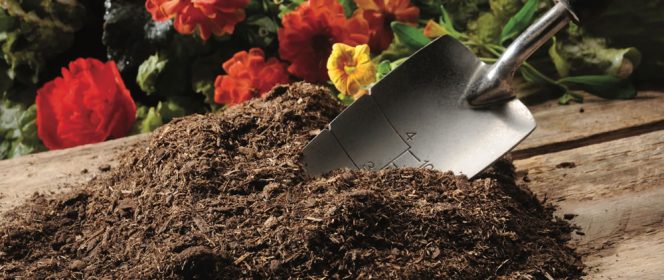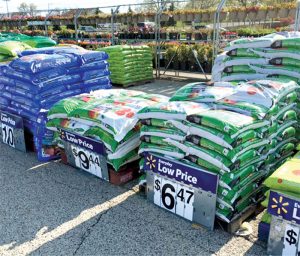What looks like peat, acts like peat but isn’t peat? That’s the sustainability story behind Magic Dirt™, made from anaerobically digested dairy manure fibers.
Nora Goldstein
BioCycle March/April 2017
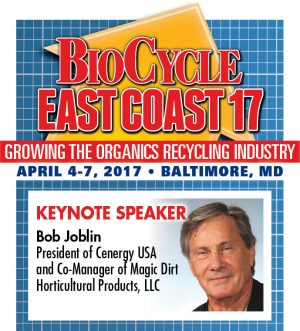 Bob Joblin and Ted Sniegocki joined forces to form Cenergy USA, Inc., based in Little Rock, Arkansas, in 2005. “Ted and I first met in 1974, right after we each finished our tours of duty with the Army in Vietnam,” recalls Joblin. “I was doing nonprofit downtown urban redevelopment work, and Ted was working for United Way. Then I started doing private development projects, and he went into investment banking. We started Cenergy in 2005 to finance energy efficiency and renewable energy projects, which led to developing our first anaerobic digester in 2008.”
Bob Joblin and Ted Sniegocki joined forces to form Cenergy USA, Inc., based in Little Rock, Arkansas, in 2005. “Ted and I first met in 1974, right after we each finished our tours of duty with the Army in Vietnam,” recalls Joblin. “I was doing nonprofit downtown urban redevelopment work, and Ted was working for United Way. Then I started doing private development projects, and he went into investment banking. We started Cenergy in 2005 to finance energy efficiency and renewable energy projects, which led to developing our first anaerobic digester in 2008.”In 2006, the National Renewable Energy Laboratory (NREL) connected Cenergy USA with Dean Foods, a food and beverage company that specializes in dairy products, which wanted to do an economic evaluation of all known anaerobic digestion technologies for manure management on dairy farms. “We had not done any anaerobic digestion (AD) work until that point,” explains Joblin. “NREL was instrumental in making that connection. We talked Dean Foods into backing the first nondairy developed/owned AD project, and Big Sky West Dairy near Gooding, Idaho, was willing to support us. Cenergy developed the digester with Dean Foods, DVO, Inc. and Andgar (now Regenis), and we still own and operate that project. Dean Foods did it to showcase the potential for its dairy clients.”
The digester at Big Sky West Dairy, which has about 4,700 cows, began operating in 2009. A power purchase agreement was established with Idaho Power Co. A portion of the separated digested solids is used as bedding for the dairy cows. “But the plant was producing mountains of digested fibers,” recalls Joblin. “We were told a market existed for this material, but there wasn’t one there, at least at that time. Cenergy hired consultants to help us figure out markets. They had us talking with various soil products companies, but in the end, it was all for naught, and we didn’t move ahead. Then one night, Ted and I sketched out what we wanted to do on the back of a cocktail napkin, and decided to develop a product on our own. That resulted in Magic Dirt™, a potting soil that we planned to bag and market.”
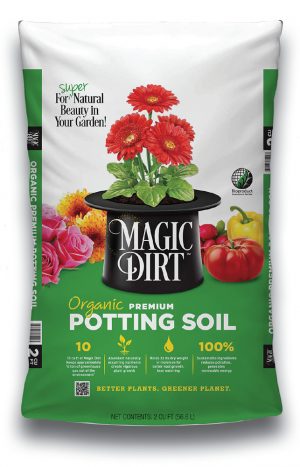
Magic Dirt™ Potting Soil is sold in close to
1,500 Walmart stores in 20 states. Photo courtesy of Magic Dirt™
“From our vantage point, the DVO digester technology is the most effective and efficient system for removing volatile solids and yielding long, linked fibers after solids separation,” explains Joblin. “The long fibers hold water and give Magic Dirt the porosity that emulates peat moss.” The digested fibers do not go through a composting phase prior to bagging.
Cenergy, doing business as (dba) Magic Dirt Horticultural Products, Inc., contracted out the blending of the fibers and other ingredients, as well as the bagging, to a company located near the Big Sky West digester. It was also getting digested fibers from another AD facility, Double A in Jerome, Idaho. To bring Magic Dirt potting soil to market in that region, the product had to be registered with state Departments of Agriculture either as a fertilizer or soil amendment product, depending on each state’s classification. In April 2014, Magic Dirt was approved as an “Idaho Preferred” product (sourced and manufactured in Idaho), and Cenergy was invited to participate in Idaho Preferred promotions at 25 Walmart stores in Idaho. “Our product had to be in the stores in May,” says Joblin. “We had to scramble to print the signage, but this was a great opportunity to introduce Magic Dirt.”
Today, the Magic Dirt bagged soil products are sold in close to 1,500 Walmart stores in 20 states. The potting and garden soils are certified organic. This spring, Cenergy will begin selling Magic Dirt at independent nurseries and garden stores.
BioCycle interviewed Joblin to gain insights on how to scale to serve a national market.
The Business Case
BioCycle: We reached out to you about being a Keynote at BioCycle EAST COAST17 because we want to showcase a company in the anaerobic digestion sector that is making the business case for organics recycling by building markets for digestate-derived products. What has been core to making that business case?
Joblin: Three words. The Sustainability Story. That is what makes Magic Dirt appealing to Walmart and to our other customers. When we first met with the CEO of Walmart, Doug McMillion, we explained our sustainability story and he asked, “What are you, Magic Dirt, doing to get your sustainability story out to our customers? You need to sell your story.” We recently introduced two new bagged products, raised bed and garden soils, and the first question Walmart asked us was, “Do these have the same sustainability story? Is it a sustainable alternative to peat moss?” That is the foundation of Magic Dirt’s horticultural products.
And our products have a good story to tell. For example, a study commissioned by the Innovation Center for U.S. Dairy in 2013 found that replacing peat moss with dairy digester fiber in the U.S. market could avoid the release of greenhouse gases equivalent to 5.8 million metric tons of CO2 equivalent. But here’s the key: We needed to have a consistent quality product that performs equal to or better than traditional products without that sustainability story.
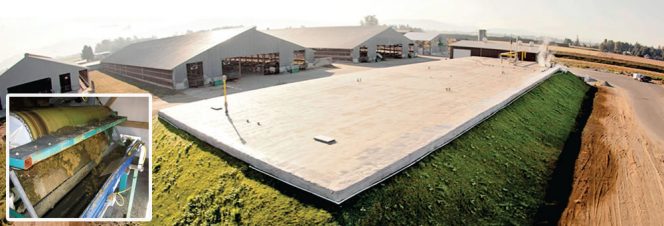
Cenergy USA found that the DVO digester technology (top) is the most effective system for removing volatile solids and yielding long, linked fibers after solids separation (above) that give Magic Dirt the porosity that emulates peat moss. Photos courtesy Magic Dirt™
Joblin: Part of what Ted and I zeroed in on when coming up with Magic Dirt is that the DVO post-digested solids are the only fiber that is a sustainable alternative to peat moss. The ability to market a peat-free product that has similar properties to and performs like peat, is very important to what we are doing and what Walmart is interested in. The Magic Dirt potting soil is now patented; it is that unique and that specific.
BioCycle: Has using only that type of digested fiber limited Cenergy’s ability to expand markets for Magic Dirt?
Joblin: Not so far, especially as DVO has over half of the systems in operation around the U.S. at dairy farms. We are using only digested dairy manure for the soil products. Digested swine manure and poultry litter can and will be used for other products. In all cases, we purchase the fiber for our products.
BioCycle: Over the years we’ve seen that compost manufacturers are reluctant to sell to big box stores like Walmart because of meeting volume demands and staying within tight cost margins. But Cenergy went in this direction almost from the beginning. Why?
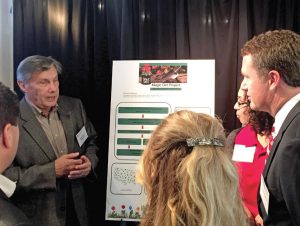
Bob Joblin (left) tells Magic Dirt’s sustainability story to Walmart CEO Doug McMillon. Photo by Nahan Joblin
And it gets back to selling our sustainability story, which is how we got in the door in the first place. Walmart says don’t spend money on advertising, as customers will come to our stores to buy these kinds of products. But our product has to capture their attention. They told us, “We get them in the door. Your product has to sell within 8 seconds.” Ted and I designed the bag the first year, and it was awful! One of Walmart’s implied requests was for us to change the bag design. And that has paid off. Sales are up 60 to 300 percent on a same store basis, due primarily to our sustainability story.
BioCycle: How have you been able to scale production of bagged product to supply these stores?
Joblin: We started out using third party baggers, but recently, opened our first bagging plant. We believe that will become integral to what we do as it has become difficult to find baggers in the regional markets where we need to be. The plant we just opened is near Pixley Biogas in Pixley, California, outside of Fresno. That is the only DVO digester in California, and we contracted for all of its output. The closest third-party bagger we could use was in Glendale, near Los Angeles, about 150 miles away, which wasn’t cost-effective.
Next Moves
In 2016, Magic Dirt barely broke even. Joblin and Sniegocki financed the company internally initially, and then got angel investors to help carry them through to where they are today. It recently established a line of credit to finance the 2017 expansion. We discussed the realities of working with financial institutions, as well as the next product development and marketing moves for Magic Dirt.
BioCycle: Have you and Ted reached out to the more traditional investment industry to finance Magic Dirt?
Joblin: We had a conversation recently with an investment banker. There were two fundamental criteria: Proof of concept and proof of commercial viability, which appears to be set at $5 milllion/year or higher. But there is a Catch 22. These investors want to control you once you have proven to be successful. And Ted and I don’t want to give up the company.
Furthermore, some of these investors say they are dedicated to sustainability, but what they really want is to make money, and we would have to give up too much to get their money. Then, you get a company like Walmart that says, if you meet our sustainability standards, we are behind you.
BioCycle: What is your next big opportunity?
Joblin: It is definitely in meeting market demand for certified organic products and developing more Magic Dirt products. Penetrating that market in a more substantial way than we are able to do now, however, requires a reclassification of anaerobic digestate in the National Organic Program (NOP), which is administered by the National Organic Standards Board (NOSB). The NOP is housed within the U.S. Department of Agriculture. Currently, anaerobic digestate is in the classification, “manure—raw, with restrictions,” on the National List of Allowed and Prohibited Substances. The first step to change that classification is to file a petition to request an amendment to the USDA organic regulations, in this case, section 205.203.
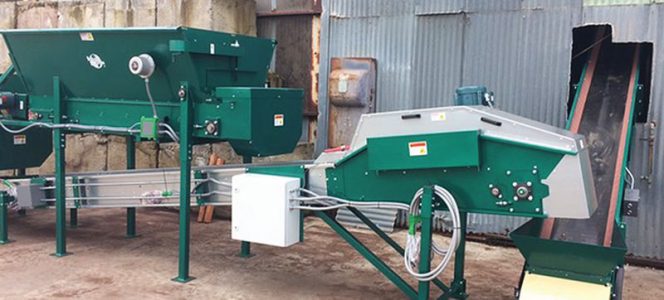
Magic Dirt recently opened a bagging plant near the Pixley Biogas digester in Pixley, California as a third party bagger is not available in this region. Photo by Bob Joblin
Cenergy USA was notified last August that the NOSB Materials Subcommittee decided to add the petition to the work agenda of the NOSB Crops Subcommittee, which in turn requested the development of a third-party technical evaluation report regarding anaerobic digestate. We are expecting that report any day, and if it leads to the reclassification of anaerobic digestate, that will present exciting product development and marketing opportunities for the entire industry.
BioCycle: It’s been 11 years since you and Ted stepped into the anaerobic digestion sector. What have you learned that can inform the AD sector going forward?
Joblin: There are many products that can be created from digester outputs. People in the digester industry should identify needs in the marketplace and then work backwards to determine how to fill these needs. And there is a gap between bringing a product(s) to market and gaining market acceptance. Companies have to both create the product and create the demand. The latter can be the bigger challenge.
We don’t see many people in our industry wanting to put much money at risk at the front end of that process to get through that gap. But if they know the product will work and know the potential, they have to find the resources to push through that gap. We did it with Magic Dirt, and it’s been well worth it.



